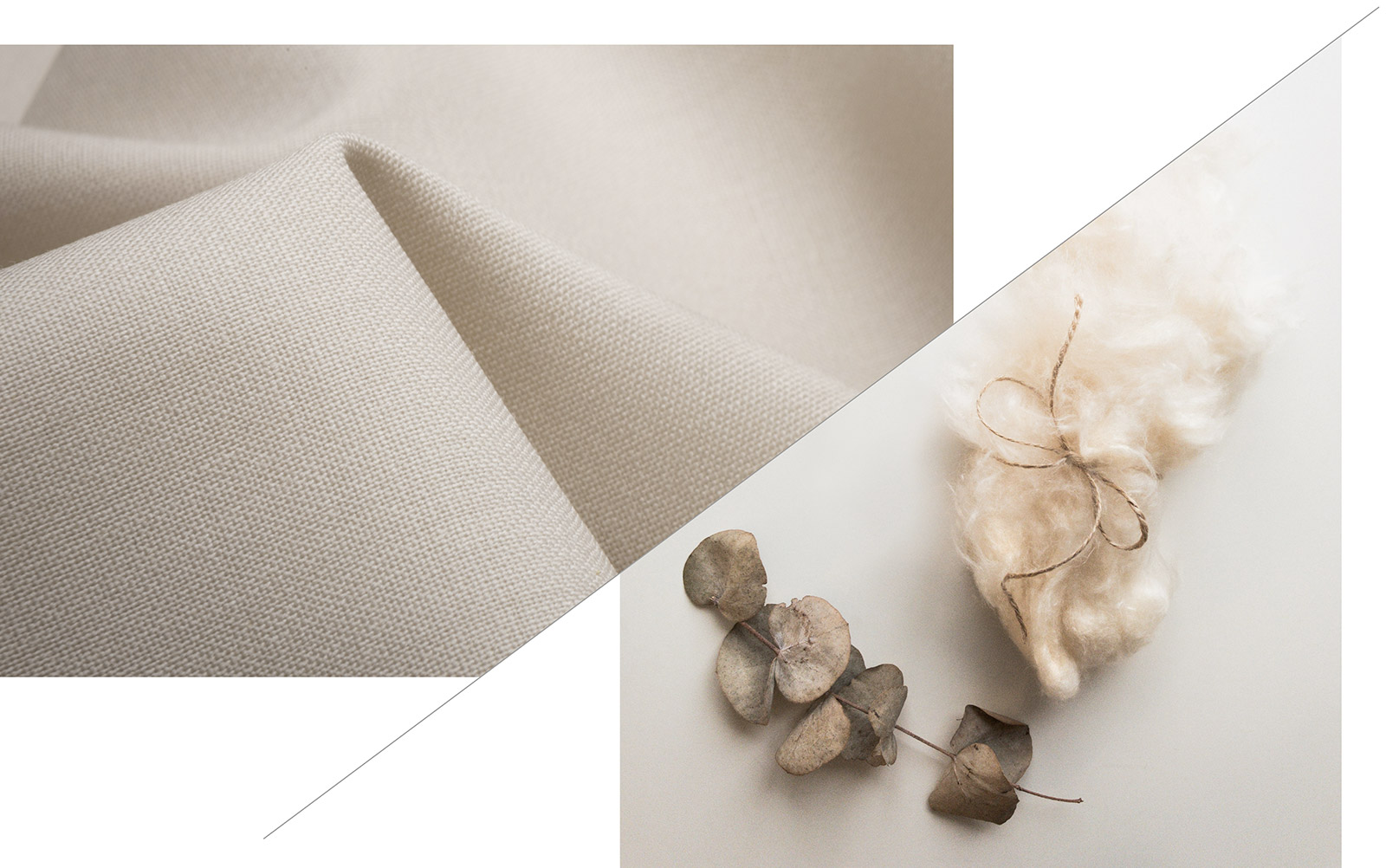Designing and producing fabrics in a sustainable way for today’s lifestyles and for generations to come. Those who work with wool have the privilege of working with an extraordinary raw material, a fibre with the best natural properties such as softness, insulation and breathability. Then there is the question of the elaborate supply chain, which poses innumerable challenges on the sustainability front: animal welfare; the depletion of resources; the impact of production on the environment and the community; and the well-being of end users. The wool mill has long been committed to taking action in these areas. For this reason, it continues to invest in new practices and technologies. Sustainability is a responsibility that is very much a part of the Zignone identity. The wool mill is fully aware that showing respect for the environment is not measured in proclamations but in concrete results.

Our commitment in favour of the environment
True elegance is being respectful of the environment
Sourcing raw materials
Animal welfare comes first
The Green Trace symbol guarantees the provenance of wool from monitored farms. Suppliers must comply with animal welfare laws and the Five Freedoms outlined by the Royal Society for the Prevention of Cruelty to Animals: freedom from hunger or thirst; freedom from discomfort; freedom from pain, injury or disease; freedom to express normal behaviour; and freedom from fear and distress.
Green Trace
A symbol guaranteeing full traceability within the supply chain
To ensure maximum transparency, Lanificio Zignone has introduced the Green Trace symbol. The symbol guarantees full traceability. Products marked Green Trace provide the complete history of individual fabrics in the form of a mapping of the supply chain to allow clients total control over sustainability. The Green Trace symbol acts, in other words, as an Origin Chain register, which traces in detail the journey of purchased fabrics: their provenance, the various actors, when each production phase is performed, and the eventual identification of specific production lots.
Control, safety, quality
When industry and nature coexist
From the beginning, the wool mill has chosen to oversee each phase of dyeing, spinning, weaving and finishing at its factories. For Zignone, complete control offers the certainty of safe working conditions for staff and for the environment – first and foremost over the kinds of substances used in processing. Long conscious of the need to limit chemical agents, and convinced that industry and nature can coexist, the wool mill follows the principles of the ZDHC protocol and its vision for a production with Zero Discharge of Hazardous Chemicals. This direct supervision of the various stages of processing is the only way sustainability and product quality can be guaranteed simultaneously.
Towards a circular economy
A versatile material like wool offers value, no matter the form it takes. Zignone offers leftover scraps to the marketplace in order to eliminate the production of waste, thus promoting a circular production system.
The organic line Zone
Dedicated to men and women who look to the future
Zone is aimed at those who care deeply about nature when they are making choices. In terms of aesthetics, the fabrics of the line offer a more essential style that is equally suitable for men’s and women’s garments. It is perfect for a growing segment of the public who are environmentally conscious and attentive to quality.
For the region and the community
All the aspects of sustainability according to Zignone
When talking about the environment, the aim is to be comprehensive and thorough. Actions by the wool mill and its production process should be done with the idea of having a positive impact on the Biella area – a place that Zignone owes much to because of the natural riches and local know-how. Strict control of substances is just the first step. Every day the company is actively looking for ways to make processes more efficient and to cut out resources, thus reducing its overall footprint. To this must be added the social commitment by the company towards its workers.
Water and energy
Respect for resources
Biella owes its position as the capital of wool to the abundance and quality of its water. The purification and recovery plant at the wool mill, together with next generation machinery, reduces water consumption by over 30,000 cubic metres per year and results in water consumption of less than .05 cubic metres for every metre of fabric produced. The same commitment is applied to other resources. Zignone uses energy from renewable sources for 80 per cent of its needs. This is thanks to photovoltaic systems installed at the wool mill factories and to an energy supply that aims to minimise climate-changing emissions.
Energy efficiency
The environmental and economic benefits of eco-friendly processing
Investments in sustainability are also about energy usage. With over 900 photovoltaic panels, solar energy supplies the wool mill with 20 per cent of its needs. The parameters and peak power of the panels, equal to 195.30 kWp, are able to lower the emission of greenhouse gases. The benefits are multiple: environmental, thanks to the reduced use of fossil fuels and lower carbon dioxide output; energy-wise, it optimizes the use of electricity grids, with lower losses for transporting and distributing electricity. In economic terms, there are long-term savings on supply. To counter squandering resources, the wool mill monitors the entire production process inside its plants with the perspective of obtaining an energy efficiency certification.
Skill and craftsmanship
The culture and strength of a group
The Biella valleys have provided the perfect conditions for textile production. However, the centuries-long run of excellence is down to local workers and the knowledge they have accumulated over time. The fabric’s quality is linked to their skills and controls in an occupation where the human factor adds tremendous value. The call for an ethical code inside the wool mill is the most recent example of a corporate culture based on social responsibility.